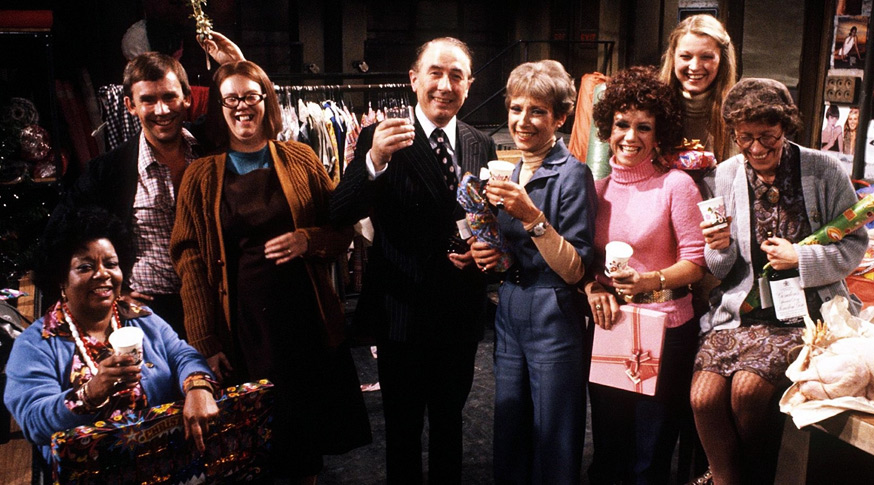International Women’s Day is an opportunity to celebrate the achievements of women across the world.
This year’s theme also encourages us to raise awareness about the biases that exist and to take action towards equality. In her book The Authority Gap – released in paperback on 8 March 2022 – author Mary Ann Sieghart looks at years’ worth of data to explore every day, unseen bias that impacts women at every level of their careers.
This is something RADA Business tutors Sheelagh McNamara and Lisa Åkesson also see.
Sheelagh McNamara:
“We know that girls perform better than boys in the earlier stages. They talk earlier, they’ve got wider vocabularies, they learn self-discipline earlier, they get better grades at school. More girls go to university than men,” Sheelagh says.
But something happens when women enter the workplace. Sheelagh points to consultancy firm McKinsey’s annual Women in the Workplace study, undertaken with the LeanIn organisation, which focuses on American corporate culture.
Over the last few years, the survey has identified a phenomenon called the ‘broken rung,’ which refers to that first step from an entry-level position to manager. 2021 data showed that, for every 100 men promoted to manager, only 86 women are promoted, and the gap widened when looking specifically at Black women and women of colour. As a result, men outnumber women significantly at the manager level, which means that there are fewer women to promote to higher levels. Consequently, there are then fewer women in positions of leadership.
Lisa Åkesson:
“This trend is not to do with women’s competency but their confidence, which can be impacted by varying degrees of self-doubt – sometimes called ‘imposter syndrome’. When you combine this with a backdrop of conscious and unconscious bias, where women are told – implicitly, if not explicitly – not to be too loud, bossy, greedy or too ambitious, then it can often hold women back from putting themselves forward and asking for what they need or want.”
So, as is the case for all individuals, women’s working environments feed into their sense of identity. If they aren’t working for a supportive organisation, they may start to doubt themselves. In some cases, the combination of an unsupportive environment and internal self-doubt can create a culture where women are indeed taken less seriously than their male counterparts.
This is why supportive environments are key to helping women and marginalised groups climb the career ladder. The general pervading workplace culture has not, historically, been supportive of women, but – even if the impact of the pandemic remains to be seen – there have been definite improvements in recent years.
Whether they are working remotely or in an office, empowering women to make their voices heard is a key component of the work Sheelagh and Lisa do on the Executive Presence for Women programme. So, what particular challenges do they think women face?
Lisa Åkesson:
“In general, women do have a harder time in the workplace. For example, if a woman interjects, she is more likely to be seen as aggressive than if she were a man. That behaviour is just seen as more acceptable in a man.”
“We’re not working on an even playing field,” agrees Sheelagh. “However, things are better now than they were 10 or 15 years ago. For example, if you look at some of our world leaders – men as well as women – there is a move in leadership to something we call ‘empassertiveness.’ It’s a combination of the traits more stereotypically associated with women; that is, kindness, empathy and collaboration, as well as that assertiveness more stereotypically associated with men.”
Sheelagh points to politicians such as American Vice-President Kamala Harris, former President Barack Obama and First Lady Michelle Obama, as well as New Zealand’s Prime Minister Jacinda Ardern and the Canadian Prime Minister Justin Trudeau as showing elements of this empassertive style of leadership.
Sheelagh McNamara:
“My personal belief is that we need this combination of qualities in all our leaders,” Sheelagh says. “The world has changed.”
So, while we still don’t know the extent to which the challenges of the last two years may impact women, with more leaders modelling this kind of leadership it seems that change is, at least, on the horizon.
RADA Business is the commercial arm of the Royal Academy of Dramatic Arts, specialising in business performance. The women’s courses sit alongside RADA Business’ open courses and explore techniques to help women thrive at work and feel empowered to perform with authenticity, credibility and impact.
RADA Business revealed that participants on their specific portfolio of women’s courses made up an impressive 41% of attendance on their overall open course attendances from October 2021 to March 2022, and within the courses in the leadership sphere, 52% of delegates were female – representing an emphasis on their development at a top level.
The Women’s Portfolio of courses works with professionals at all levels, from those in the early stages of their careers to top level executives, and includes Executive Presence for Women, Impact and Influence for Women and Stepping up with Confidence for Women.
After completing a course, participants are then invited to join the Women’s Network, which, every year, hosts three creative and practical workshops alongside networking with senior women in business from a range of industries.
To read more about RADA Business, please visit: radabusiness.com












